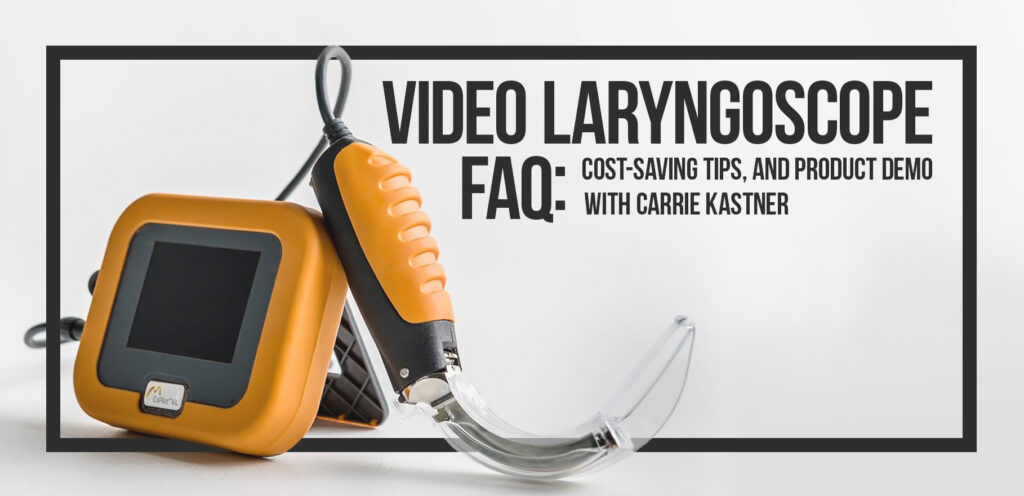Blog
Video Laryngoscope Q&A

Carrie Kastner, MME’s Senior Contract and Sales Manager, shares her thoughts about video laryngoscopes, from FAQs, cost-saving tips, and important things to consider when purchasing:
Q: What advantages does Video Laryngoscope intubation have over other methods?
Carrie Kastner: Video intubation provides an indirect view to the airway for improved glottic visualization using less force to the base of the tongue and less cervical movement over DL. This is especially important in anticipation of a difficult intubation or trying to guard a potential cervical injury. It is touted as a safer and more reliable method to successful pediatric intubations- since this is a less common procedure with drastically differently sized airways, being able to visualize the path to the airway makes for a more successful intubation on first attempt. Video intubation was also utilized during the Covid-19 pandemic as a safer method to intubate Covid positive patients- it kept the provider from being so close to the patient’s face.
Q: What is the most important thing every healthcare professional should consider before buying a Video Laryngoscope?
Kastner: The device should be fast and easy to use- anyone with rudimentary knowledge of a VLS should be able to grab and go. The visual field should be clear and well-illuminated and not fog up. Video laryngoscopes are powered either by rechargeable batteries or standard disposables such as AAs- the battery life meter should be clear and easy to see so power is not lost during a procedure.
Q: What improvements to the product are manufacturers making to improve patient care and ease-of-use with VLs?
Kastner: Manufacturers are working with light control, capturing images, and ambient light reduction. The color of light matters when checking airways- they are perfecting the best visual fields for providers. Some screens are adjustable, some have tethered handles so the screen can be moved around. It’s all about what helps the professional see best in an array of situations, be it on the side of an interstate after an accident or in an operating room.
Q: What are some cost-saving tips you can share regarding Video Laryngoscopes?
Kastner: VLS systems come with disposable or reusable blades. Depending on your facility, the cost of ownership needs to be considered. Will it rarely ever be used, and a couple of disposable blades be all you need with a backup pack of AAs? Or is this a frequent use item and the disposable with the LiIon longlife battery and a backup fit better? How many reusable blades would you need to make sure there is always one that has been autoclaved?
Q: What are some steps that a facility can take to increase the lifespan of their laryngoscope(s)?
Kastner: Knowing what the individual VLS requires in terms of cleaning and maintenance, making sure the batteries are healthy and not leaking, and storing them safely extends the life of any piece of equipment.
Q: Are there any common misconceptions about VLs and Intubation?
Kastner: There is a misconception that if you can’t intubate directly, you don’t know what you are doing. That is a huge misconception- if you can be gentler on the patient’s soft tissues and cervical spine, that is just better care. It’s ok to work smarter.
Q: What else do you think end-users should know about purchasing and maintaining Video Laryngoscopes?
Kastner: Know what you need, or call us to let us help. MME has tons of information and videos to help you choose what works for you!

Carrie Kastner
Senior Contract and Sales Manager
